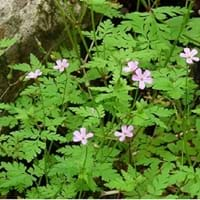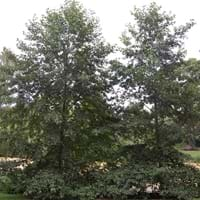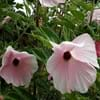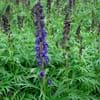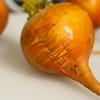Life Span
Annual or Biennial
Perennial
Origin
Asia, Europe, North Africa, North America
North America, United States, Northwestern United States, Alaska, California, Canada
Types
Not Available
Not available
Habitat
Shaded sites, Waste areas
Lowland evergreen rainforest
USDA Hardiness Zone
3-9
4-7
Sunset Zone
21,22
3a, 3b, 4, 5, 6, 7, 14, 15, 16, 17
Habit
Clump-Forming
Pyramidal
Flower Color
Pink, Magenta, Rose
Yellow, Red, Coral
Flower Color Modifier
Bicolor
Bicolor
Fruit Color
Not Available
Brown
Leaf Color in Spring
Green, Light Green
Green, Dark Green
Leaf Color in Summer
Green
Dark Green
Leaf Color in Fall
Red, Green, Dark Red
Dark Green
Leaf Color in Winter
Light Green
Not Available
Leaf Shape
Arrowhead
Ovate
Plant Season
Spring, Summer, Fall, Winter
Spring, Summer, Fall
Sunlight
Partial Sun, Partial shade, Full Shade
Full Sun, Partial Sun, Partial shade
Growth Rate
Very Fast
Fast
Type of Soil
Loam, Sand
Loam, Sand
The pH of Soil
Acidic, Neutral, Alkaline
Acidic, Neutral, Alkaline
Soil Drainage
Average
Average
Bloom Time
Spring, Late Spring, Early Summer, Summer
Early Spring
Tolerances
Not Available
Maritime exposure, Salt water
Where to Plant?
Ground
Ground
How to Plant?
Not Available
Layering, Seedlings
Plant Maintenance
Medium
Medium
Watering Requirements
Keep ground moist, Requires regular watering
Average Water Needs
In Summer
Average Water
Lots of watering
In Spring
Average Water
Moderate
In Winter
Average Water
Average Water
Soil pH
Acidic, Neutral, Alkaline
Acidic, Neutral, Alkaline
Soil Type
Loam, Sand
Loam, Sand
Soil Drainage Capacity
Average
Average
Sun Exposure
Partial Sun, Partial shade, Full Shade
Full Sun, Partial Sun, Partial shade
Pruning
Cut or pinch the stems, Remove damaged leaves, Remove dead leaves
Remove damaged leaves, Remove dead branches, Remove dead leaves
Fertilizers
Not Available
All-Purpose Liquid Fertilizer, Nitrogen
Pests and Diseases
Downy mildew, Pest Free, Powdery mildew
Not Available
Plant Tolerance
Shade areas
Maritime exposure, Salt water
Flowers
Showy
Insignificant
Flower Petal Number
Single
Not Available
Fragrant Bark/Stem
Yes
No
Foliage Texture
Fine
Medium
Foliage Sheen
Matte
Glossy
Attracts
Not Available
Insects, Not Available
Allergy
Not Available
Not Available
Aesthetic Uses
Cottage Garden, Showy Purposes
Not Used For Aesthetic Purpose
Beauty Benefits
Good for skin, Reduce Bruises, Skin irritation
Skin Problems
Environmental Uses
Insect Repellent
Air purification, Prevent Soil Erosion, Shadow Tree
Medicinal Uses
Antioxidants, Antiseptic, Astringent, Diabetes, Diarrhea, Diuretic, Gallbladder Diseases, Haemorrhages, Inflammation, Kidney problems, Kidney Stones, Liver problems, Sore throat, Strengthen gums, Swelling, Ulcers
Anodyne, Appetizer, Astringent
Part of Plant Used
Leaves, Root, Whole plant
Flowers, Inner Bark, Sap
Other Uses
Can be made into a herbal tea, repels rabbits, deers and mosquitos, Used as a nutritious food item
Used as a dye, used for making charcoal, Used for making informal hedge
Used As Indoor Plant
No
No
Used As Outdoor Plant
Yes
Yes
Garden Design
Bedding Plant, Mixed Border, Wildflower
Screening / Wind Break, Shade Trees
Botanical Name
GERANIUM robertianum
ALNUS rubra
Common Name
Death-Comes-Quickly, Herb Robert, Dove's Foot, Crow's Foot, Storksbill, Red Robin
Oregon Alder, Red Alder
In Hindi
जड़ी बूटी रॉबर्ट
red alder
In German
Kraut Robert
rot-Erle
In French
herbe à Robert
aulne rouge
In Spanish
hierba de San Roberto
aliso rojo
In Greek
βότανο Robert
κόκκινη σκλήθρα
In Portuguese
erva robert
amieiro vermelho
In Polish
herb robert
czerwony olcha
In Latin
Robertus herba
red alnus
Phylum
Magnoliophyta
Magnoliophyta
Class
Magnoliopsida
Magnoliopsida
Family
Geraniaceae
Betulaceae
Clade
Angiosperms, Eudicots, Rosids
Angiosperms, Eudicots, Rosids
Tribe
Not Available
Not Available
Subfamily
Not Available
Not Available
Number of Species
Not Available
Season and Care of Herb Robert and Red Alder
Season and care of Herb Robert and Red Alder is important to know. While considering everything about Herb Robert and Red Alder Care, growing season is an essential factor. Herb Robert season is Spring, Summer, Fall and Winter and Red Alder season is Spring, Summer, Fall and Winter. The type of soil for Herb Robert is Loam, Sand and for Red Alder is Loam, Sand while the PH of soil for Herb Robert is Acidic, Neutral, Alkaline and for Red Alder is Acidic, Neutral, Alkaline.
Herb Robert and Red Alder Physical Information
Herb Robert and Red Alder physical information is very important for comparison. Herb Robert height is 25.40 cm and width 30.50 cm whereas Red Alder height is 1,370.00 cm and width 610.00 cm. The color specification of Herb Robert and Red Alder are as follows:
Herb Robert flower color: Pink, Magenta and Rose
Herb Robert leaf color: Green and Light Green
Red Alder flower color: Yellow, Red and Coral
- Red Alder leaf color: Green and Dark Green
Care of Herb Robert and Red Alder
Care of Herb Robert and Red Alder include pruning, fertilizers, watering etc. Herb Robert pruning is done Cut or pinch the stems, Remove damaged leaves and Remove dead leaves and Red Alder pruning is done Remove damaged leaves, Remove dead branches and Remove dead leaves. In summer Herb Robert needs Average Water and in winter, it needs Average Water. Whereas, in summer Red Alder needs Lots of watering and in winter, it needs Average Water.
